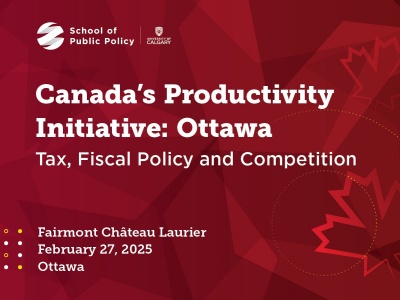Fiscal Literacy
As oil prices bottom out – we hope –the Alberta government is facing a major shortfall of provincial revenue. That has led to a recent flurry of rumours, arguments and trial balloons about what kind of tax reform or tax increases will be needed to generate revenue, while still protecting the “Alberta Advantage”. One such trial balloon was floated recently by Premier Jim Prentice and reported in the Edmonton Journal. However the article “Flat tax ‘bites working poor pretty hard,’ Prentice says” perpetuates a number of misconceptions about the flat tax.
Referring to the provincial income tax, the article states that “all Albertans pay 10 per cent tax, regardless of income.” This is simply not true and is based on confusing the marginal income tax rate and the average income tax rate. The marginal income tax rate is the amount that an individual pays on an extra dollar of income. Under the Alberta provincial income tax, those who earned more than $17,787 in 2014 paid an additional 10 cents in personal income tax when they earned an additional dollar. Those who earned less than $17,787 do not pay any provincial income tax in Alberta whatsoever. And because of the basic personal exemption and other tax credits, the average provincial personal income tax rate, which is the best way to measure the tax burden across income groups, is always less than 10 percent and much lower in the case of those with low income.
The article goes on to state that “low income Albertans earning less than $37,000 a year pay 10 per cent income tax, nearly double the tax that they would pay if they lived in B.C. or Ontario.” Again, this is simply not true. The following table, which is based on data on page 128 from the 2014 Alberta Provincial Budget, shows the one earner family with two children making $37,000 a year would be a net recipient of $1,398 from the Alberta government in 2014, not a net tax payer. In fact, they would be much better off than a similar family in BC and slightly better off than one in Ontario – the latter both being provinces with a so-called progressive tax. The table also shows that the middle income family earning $75,000 would pay 3.9 percent of its income to provincial coffers in Alberta. They would pay more in both BC and Ontario. On the other hand, a high income family earning $200,000 would pay 6.6 percent of its income in Alberta, more than in BC, but somewhat less than in Ontario.
The provinces own data is clear. Alberta’s so-called “flat tax” is a progressive tax because the average tax rate rises as family income increase from -4.0 percent at $35,000 to 3.9 percent at $75,000. 4.9 percent at $100,000, and 6.6 percent at $200,000. Only families with very, very high incomes would come close to paying 10 percent of their incomes in tax.
Economists know that facts don’t often stand a chance up against a good political narrative. But the stakes are high. The provincial government does seem to be considering a major tax reform. So it’s up to all of us to check the facts. Because we can’t always count on journalists to do that for us.
|
Family income and characteristics |
Taxes |
AB |
BC |
ON |
|
$35,000 Employment income, one earner, two children |
Provincial Income Tax |
-1,398.00 |
732.00 |
-1,320.00 |
|
Average Tax Rate (%) |
-4.0 |
2.1 |
-3.8 |
|
|
|
|
|
|
|
|
$75,000 Employment income, two earners, two children |
Provincial Income Tax |
2,942.00 |
3,224.00 |
3,597.00 |
|
Average Tax Rate (%) |
3.9 |
4.3 |
4.8 |
|
|
|
|
|
|
|
|
$100,000 Employment income, two earners, two children |
Provincial Income Tax |
4,853 |
3,690 |
3,840 |
|
Average Tax Rate (%) |
4.9 |
3.7 |
3.8 |
|
|
|
|
|
|
|
|
$200,000 Employment income, two earners, two children |
Provincial Income Tax |
13,275 |
11,324 |
13,905 |
|
Average Tax Rate (%) |
6.6 |
5.7 |
7.0 |


